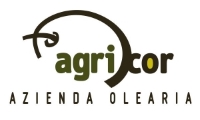Acidity (in olive oil): this is the percentage of acidity expressed in grams, determined by the content of the oleic acid present in one hundred grams of olive oil.
Alkyl esters: compounds (known in the literature as methyl and ethyl esters of fatty acids) which are formed as a result of the fermentation and break-down of olives and which involve the production of methyl and ethyl alcohol and the release of fatty acids from triglycerides. A high percentage of these substances is an indicator of poor quality in extra-virgin oil, which is impoverished from a nutritional point of view as it loses many of its antioxidant properties. In practice, alkyl esters are evidence of incorrect conservation due to faulty storage techniques of the raw material. Two examples of this are leaving olives stacked for days in huge heaps (as often happens in the Spanish industrial systems), or storage after the fermentation process is already underway.
Animal fats: substances that are dangerous for our bodies if taken in large quantities since they are composed of triglycerides formed of saturated fatty acids which are solid at room temperature.These promote the development of cardiovascular diseases and possibly also cancer.
Anthocyanins: these belong to the family of “flavonoids” which are polyphenolic compounds. Thanks to their antioxidant and anti-radical power, these substances can be very useful in medicine. These pigments seem to protect against capillary fragility, and against various aging processes or cellular modifications caused by oxygen, including inflammatory processes and carcinogenic modifications. They also protect plants from damage caused by ultraviolet radiation.
Antioxidants: antioxidants are chemicals (molecules, ions, radicals) or physical agents, which slow down or prevent the oxidation of other substances. Oxidation is a chemical reaction that transfers electrons from a substance to an oxidizer. Oxidation can produce free radicals, which are responsible for initiating a chain reaction that damages cells. Antioxidants terminate these chain reactions by intervening on the intermediate radicals and inhibiting other oxidation reactions by oxidizing themselves
